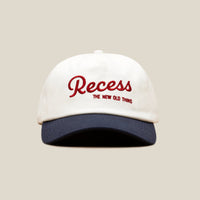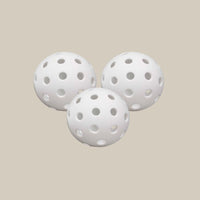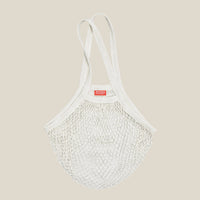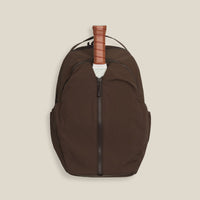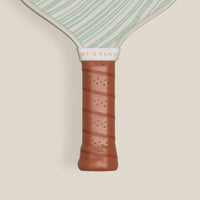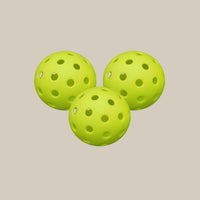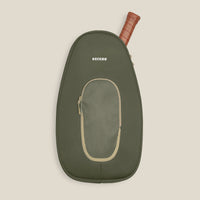How To Hold a Pickleball Paddle: Grips & Tips
When you first step onto a pickleball court, one of the most fundamental skills you need to master is how to hold a pickleball paddle. A proper grip not only enhances your control over the ball but also plays a crucial role in improving your overall pickleball skillset. Whether you're aiming for a killer serve or a perfectly placed drop shot, the way you hold your paddle can make all the difference. In this guide, we’ll break down the different grips used in pickleball, provide tips for perfecting your hold, and help you discover which grip suits your playing style best.
The Basics of Holding a Pickleball Paddle
Before diving into specific grips, let's start with the basics. Holding a pickleball paddle correctly involves more than just grabbing it and hitting the ball. It’s about finding the right balance between control and comfort, ensuring that your paddle becomes an extension of your arm.
Finding the Right Paddle
First things first, if you haven’t already chosen your paddle, it’s essential to select one that fits well in your hand. If you’re looking for options, check out our selection of Pickleball Paddles to find one that matches your style and preference. Once you’ve got your paddle, it’s time to focus on how you’re holding it. If you need help deciding on a paddle, check out our Paddle Buying Guide!
The Continental Grip: Your Go-To Foundation
The continental grip is one of the most commonly used grips in pickleball, especially among beginners and intermediate players. This grip is versatile, making it ideal for a variety of shots, including volleys, serves, and dinks.
How to Achieve the Continental Grip
To achieve the continental grip, hold the paddle as if you’re shaking hands with it. Place your index knuckle on the second bevel of the paddle handle. This grip is sometimes called the “hammer grip” because it resembles how you’d hold a hammer. It’s a comfortable and neutral position that allows for quick adjustments between forehand and backhand shots.
Pro Tip: The continental grip is particularly useful when you’re at the net and need to react quickly. It offers a good mix of control and power, making it a favorite for players who prefer an all-around game.
The Eastern Grip: Precision at Its Finest
If you’re looking to add more precision and spin to your forehand shots, the eastern grip might be your new best friend. This grip is similar to the way you’d hold a tennis racket for a forehand stroke, making it an easy transition for tennis players entering the pickleball world.
How to Achieve the Eastern Grip
For the eastern grip, place your index knuckle on the third bevel of the paddle handle. Your hand should be slightly more on top of the paddle compared to the continental grip. This positioning provides more surface area for contact, helping you generate spin and control the direction of the ball.
Forehand Grip vs Easter Grip
The eastern grip is often referred to as the “forehand grip” because it enhances your ability to deliver powerful, controlled forehand shots. It’s an excellent choice for players who like to dominate the baseline with precise, spin-heavy strokes.
The Western Grip: Maximum Spin, Maximum Challenge
For players who are all about spin, the western grip is the go-to. This grip allows you to put an extreme amount of topspin on the ball, making it harder for your opponents to predict and return your shots. However, it’s not without its challenges.
How to Achieve the Western Grip
To achieve the western grip, rotate your hand further around the handle so that your index knuckle is on the fourth bevel. This grip positions your hand more underneath the paddle, which is great for generating topspin but can limit your reach and make it tougher to hit low balls.
Word of Caution: While the western grip can be a game-changer in terms of spin, it requires more advanced skills to control. It’s not the best choice for beginners, but for seasoned players looking to add a new dimension to their game, it can be highly effective.
Making the Grip Yours: Adjust and Personalize
Now that you’re familiar with the primary grips, it’s essential to remember that pickleball is as much about personal comfort as it is about technique. Don’t be afraid to adjust your grip slightly to find what feels best for you. For instance, some players prefer a hybrid grip, which is a mix between the continental and eastern grips. This allows for a balance of power and control, giving you the best of both worlds.
Tip: If you’re finding it hard to maintain a good grip on your paddle during intense rallies or your grip gets a bit worn out, consider using our Replacement Grip Tape to enhance your paddle's handle. A fresh grip can make a significant difference in your comfort and performance.
Transitioning Between Grips: The Key to Versatility
In pickleball, being able to transition smoothly between grips during a game is a valuable skill. For example, you might start with a continental grip for a serve, then switch to an eastern grip for a forehand return. Practicing these transitions can make you a more versatile player, capable of handling whatever your opponent throws your way.
Practice Makes Perfect: Set aside time during your practice sessions to focus solely on grip transitions. The more fluid your movements become, the less you’ll have to think about your grip during an actual match, allowing you to focus on strategy and execution.
Conclusion: Mastering Your Paddle Grip
Mastering how to hold a pickleball paddle is one of the first steps toward becoming a confident and competitive player. Whether you prefer the all-around capability of the continental grip, the precision of the eastern grip, or the spin potential of the western grip, the key is to practice and find what works best for your style of play.
Remember, pickleball is not just about technique; it’s also about having fun and enjoying the game. So, experiment with different grips, adjust as needed, and most importantly, enjoy the process of learning and improving.
Ready to take your game to the next level? If you’re just starting out or looking to refine your skills, don’t miss our guide on How to Kick-Start Your Pickleball Journey. Happy playing!



